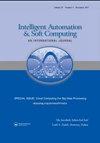使用机器学习分类器的COVID-19大流行预测和预测
IF 2
4区 计算机科学
Q2 Computer Science
引用次数: 5
摘要
COVID-19是一种新型病毒,可以通过多个链从一个人传播到另一个人。当一个人感染这种病毒时,他们会出现呼吸系统问题以及体温升高。严重的呼吸困难是COVID-19最严重的症状,这可能导致一些人患上严重疾病。然而,并不是每个感染这种病毒的人都会出现同样的症状。有些人会感冒和咳嗽,而另一些人则会出现严重的头痛和疲劳。这种病毒冻结了整个世界,因为每个国家都在与COVID-19作斗争并接种疫苗。这种不寻常的病毒引起了世界性的流行。一些研究人员使用各种统计方法来创建模型,这些模型检查了大流行的当前阶段和造成的损失,并考虑了因地点而异的其他因素。获得的统计模型取决于不同的方面,研究纯粹基于可能的偏好,即病毒传播和感染人的模式。本研究应用线性回归、多层感知和向量自动回归等机器学习分类器来预测各种COVID-19井喷。这些数据来自约翰霍普金斯大学的COVID-19数据库,重点关注在亚洲国家传播COVID-19病例的不同影响模式。©2022,科技科学出版社。版权所有。本文章由计算机程序翻译,如有差异,请以英文原文为准。
COVID-19 Pandemic Prediction and Forecasting Using Machine Learning Classifiers
COVID-19 is a novel virus that spreads in multiple chains from one person to the next. When a person is infected with this virus, they experience respiratory problems as well as rise in body temperature. Heavy breathlessness is the most severe sign of this COVID-19, which can lead to serious illness in some people. However, not everyone who has been infected with this virus will experience the same symptoms. Some people develop cold and cough, while others suffer from severe headaches and fatigue. This virus freezes the entire world as each country is fighting against COVID-19 and endures vaccination doses. Worldwide epidemic has been caused by this unusual virus. Several researchers use a variety of statistical methodologies to create models that examine the present stage of the pandemic and the losses incurred, as well as considered other factors that vary by location. The obtained statistical models depend on diverse aspects, and the studies are purely based on possible preferences, the pattern in which the virus spreads and infects people. Machine Learning classifiers such as Linear regression, Multi-Layer Perception and Vector Auto Regression are applied in this study to predict the various COVID-19 blowouts. The data comes from the COVID-19 data repository at Johns Hopkins University, and it focuses on the dissemination of different effect patterns of Covid-19 cases throughout Asian countries. © 2022, Tech Science Press. All rights reserved.
求助全文
通过发布文献求助,成功后即可免费获取论文全文。
去求助
来源期刊

Intelligent Automation and Soft Computing
工程技术-计算机:人工智能
CiteScore
3.50
自引率
10.00%
发文量
429
审稿时长
10.8 months
期刊介绍:
An International Journal seeks to provide a common forum for the dissemination of accurate results about the world of intelligent automation, artificial intelligence, computer science, control, intelligent data science, modeling and systems engineering. It is intended that the articles published in the journal will encompass both the short and the long term effects of soft computing and other related fields such as robotics, control, computer, vision, speech recognition, pattern recognition, data mining, big data, data analytics, machine intelligence, cyber security and deep learning. It further hopes it will address the existing and emerging relationships between automation, systems engineering, system of systems engineering and soft computing. The journal will publish original and survey papers on artificial intelligence, intelligent automation and computer engineering with an emphasis on current and potential applications of soft computing. It will have a broad interest in all engineering disciplines, computer science, and related technological fields such as medicine, biology operations research, technology management, agriculture and information technology.
 求助内容:
求助内容: 应助结果提醒方式:
应助结果提醒方式:


